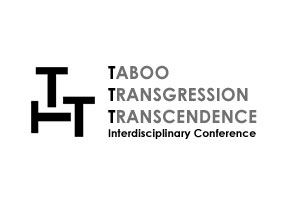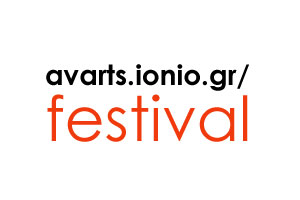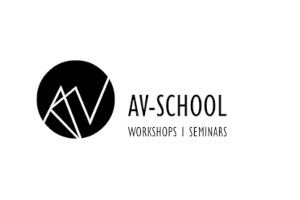A collaborative film script written by Women, Men, and Machines (European Forum for Advanced Practices, Context Working Group)
This paper presents a speculative film script titled The Sun is Shining above the Clouds, developed by the Context Working Group of the European Forum for Advanced Practices (EFAP). The film's script uses abandonment as a motif to discuss larger issues of sustainability, post-industrial adaptation, and technological obsolescence. It is conceived as a 360-degree cinematic virtual reality (360CVR) experience, it merges ethnographic research, speculative fiction, and documentary storytelling. It explores themes of abandonment, renewal, and the blurred boundaries between human and machine narratives, all set within the haunting ruins of post-industrial sites. As it
juxtaposes human voices with the spectral presence of artificial intelligence (AI), it contemplates the impermanence of technological progress. Through the lens of urban exploration (URBEX), the research for the film script questions how sites of former industrial and technological significance (factories, data centers, hotels), embody both the aspirations and failures of progress.
Beyond its aesthetic and philosophical inquiries, the film script is a testament to collaborative knowledge-making. Women, men, and machines interact in the research process, capturing, documenting, analyzing, and speculating. The film script incorporates field recordings, interviews, archival fragments, and holographic projections, drawing parallels between the Azores hotel and industrial ruins in Narva, Estonia. In this connection, the phrase The sun is shining above the clouds, found as Estonian graffiti in the hotel in the Azores, becomes an emblem of resilience and transformation.
The methodological approach is rooted in interdisciplinary, practice-based research. Central to the development of the script were field visits serving as both empirical inquiry and narrative inspiration. These trips, enabled site-specific engagement with post-industrial and abandoned architectural spaces. The fieldwork combined traditional ethnographic methods such as on-site observation, sound recording, and informal interviews, with collaborative, open-ended discussions among researchers, artists, and theorists. These conversations, often held directly in the field, acted as generative spaces for reflection, ideation, and the co-construction of speculative narratives. The performative and dialogical aspects of these field trips blurred the line between documentation and creation, making the process itself a core component of the script's development.
As part of its speculative framework, the research team made the deliberate decision to write the script as if narrated by a digitally cloned version of David Attenborough's voice. This choice was influenced by experimental media practices explored by the Clusterduck collective and is intended to provoke reflection on the ethics of AI-generated voices, authorship, and synthetic media, confronting readers with questions about technological impermanence and the moral dimensions of artificial intelligence.
AI plays a central methodological and thematic role in the project. Most notably, it is used to speculate on genenerating a voice clone of David Attenborough, a speculative move that raises ethical questions about authorship, consent, and synthetic identity. This AI-generated narrator becomes a spectral guide, an "AI ghost", that inhabits the ruins and speaks with an uncanny familiarity about both past and future technological landscapes. Beyond voice synthesis, AI functions as a conceptual tool that mirrors the themes of obsolescence and ambition explored in the script. Methodologically, the inclusion of AI challenges conventional documentary authority and introduces a meta-layer of inquiry into the aesthetics and ethics of machine-generated media.
In addition to the speculative use of voice cloning, the project employs a range of AI techniques as both creative tools and subjects of critical inquiry. These methods operate at multiple levels, textual, sonic, visual, and conceptual, making AI not only a medium of expression but also an object of study and critique.
One key method is the above mentioned voice synthesis and cloning. This involves training a neural network on public voice data to create a highly realistic simulation. The choice of Attenborough is deliberately provocative, invoking the authority of documentary narration while unsettling it through its artificial reproduction. The use of this synthetic voice raises urgent ethical questions regarding consent, intellectual property, and the politics of simulated presence, questions the film script thematises and the accompanying paper explores in depth.
Beyond voice, natural language generation (NLG) tools were used in early script development stages to generate speculative dialogues and monologues from the AI host. These outputs were curated, edited, and interwoven with human-written text, creating a hybrid authorship model that reflects the film’s core themes of collaboration between human and machine. This blending of human and machine writing was not merely procedural, it was conceptual, serving to foreground the increasingly blurred boundaries of authorship, originality, and intent in the age of generative AI.
The project also experiments with AI-generated imagery, using text-to-image models to visualize speculative futures of decay and transformation. These images, rendered in styles evoking both documentary realism and digital surrealism, serve as holographic projections within the film script's 360CVR world, forming part of its layered visual landscape. The inclusion of these artifacts within the immersive environment invites viewers to consider the aesthetics and believability of machine vision, and how AI mediates our understanding of both past and future.
Finally, AI is treated as a theoretical and critical lens throughout the project. Rather than positioning AI solely as a tool for creative enhancement, the research engages with it as a problematic actor, one that reflects broader social anxieties around automation, memory, authorship, and control. In this way, the methodological use of AI is embedded in a reflexive practice that interrogates the implications of its use across disciplines and publics. The ruins become a metaphor for the cyclical nature of human ambition, where once-celebrated innovations succumb to redundancy, much like AI projects poised on the precipice of relevance and decay.
Back





